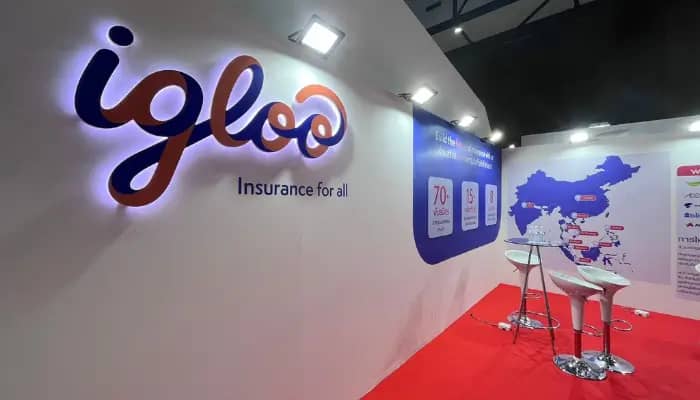Singapore – Retail and e-commerce network Hmall has recently unveiled a new branch in Singapore, marking a stride into the Southeast Asian market.
This action not only establishes a pivotal presence in Singapore but also sets the stage for Hmall’s plan to fully expand throughout the region using its powerful affiliate system.
The strategic move into Singapore underscores Hmall’s goal of reaching a broader audience and becoming a prominent player in the Southeast Asian market. The new branch will be serving as a hub for innovation, collaboration, and customer engagement.
Beyond being a retail space, Hmall recognizes the importance of staying ahead in the ever-evolving e-commerce landscape, and the Singapore branch is poised to become a centre for experimentation, adaptation, and the development of cutting-edge strategies.
Furthermore, Hmall’s affiliate system will play a central role in the expansion throughout Singapore, providing a unique opportunity for affiliates to not only benefit individually but also actively contribute to Hmall’s growth in the region.
For Hmall, this strategic move sets the stage for a comprehensive and influential global presence, marking the beginning of a year that promises numerous branch openings in key markets, including Australia, Hong Kong, Brazil, and more.
Tag: Southeast Asia
Singapore – Asian PR firm Bloomingdale Public Relations Pte Ltd. has recently acquired the PR mandate for global cheese brand Bel Group in the dynamic markets of Southeast Asia.
Following a successful collaboration with the company in India, where Bloomingdale played a pivotal role in creating and elevating the brand image, the firm will now take charge of all public relations activities for Bel Group in Singapore, Indonesia, and Malaysia.
This collaboration showcases a robust Southeast Asia focus for Bloomingdale PR, thereby establishing a solid foothold in the Southeast Asia region and leveraging Bloomingdale PR’s extensive experience in public relations and influencer marketing.
One of the recent milestones of this partnership was Bloomingdale’s role in announcing Bel’s innovative brand initiative- the launch of Indonesia’s first cheese factory for kids – the Belcube Cheese Factory at Youreka Kids Farm, Jakarta. The successful event witnessed many influencer and PR activities meticulously orchestrated by Bloomingdale, showcasing the firm’s prowess in creating compelling narratives and impactful brand experiences across the APAC region.
Sharing her thoughts on the announcement, Diana Fernandes, founder and CEO of Bloomingdale PR, said, “We are thrilled to continue our journey with Bel Group in Singapore, Indonesia, and Malaysia. Our previous collaboration in India was a testament to the synergy between our teams, and we are confident that our strategic approach and creativity will further enhance the brand’s presence. Our shared commitment to innovation and excellence positions us to deliver unparalleled PR services in Southeast Asia.”
Meanwhile, Alamjit Singh Sekhon, general manager, Bel Group Southeast Asia, remarked, “We are excited to collaborate with Bloomingdale PR yet again as we expand our presence in the Southeast Asia region. Bloomingdale played a pivotal role in the growth of The Laughing Cow brand in India, contributing to the brand’s success and establishing a strong presence.”
“We are confident in their ability to build and strengthen our brand’s awareness across Singapore, Indonesia, and Malaysia. Bel Group is committed to providing healthy snacking products that are accessible, delicious, and nutritious products in line with the philosophy of ‘for all for good.’ This partnership signifies a new chapter of growth and engagement for us,” he added.
Singapore – PubMatic has announced the appointment of Genelle Hung as its new country manager for Southeast Asia. In her new role, she will be in charge of directing strategy, sales, and operations across the region’s digital advertising supply chain.
Hung will be based in Singapore and will report directly to Jason Barnes, the Asia-Pacific region’s chief revenue officer.
Hung will be in charge of the strategic leadership of the Southeast Asian market at PubMatic. She will work directly with local go-to-market teams as well as global leadership, and she will be essential to continuing relationships with important CTV/OTT and in-app publishers in the area. She will also collaborate with agency holdcos to carry out supply path optimization transactions.
Hung most recently moved to PubMatic from AppLovin, where she spent two years as the head of demand APAC. She was in charge of growing AppLovin’s demand business in Asia through DSPs, programmatic agencies, and brands during her time there. She also led the expansion of AppDiscovery’s operations to meet the demands of non-gaming advertisers.
Speaking about the appointment, Hung expressed, “I’m excited to be joining the PubMatic APAC team at such a pivotal moment for CTV, changing consumer habits, and dynamic new inventory. I’m looking forward to building on the strong relationships I’ve already created across the region, offering high-quality products that meet and exceed clients’ business needs, and ensuring that PubMatic remains a top monetisation and technology partner.”
Meanwhile, Barnes said, “We’re thrilled to have Genelle joining our APAC team – her previous experience, coupled with PubMatic’s premium products, will ensure we deliver great results for local businesses while serving the needs of stakeholders. Genelle will play a critical role in maintaining our client portfolio, onboarding new business, and helping drive PubMatics’s continued global expansion.”
Malaysia – Airasia MOVE, an Asian travel booking platform, announced a partnership with the international payment brand UnionPay, with the goal of providing users with expanded incentives and perks. Nicole Tan, head of Airasia Rewards, and David Chong, assistant general manager of UnionPay International Southeast Asia, signed the agreement.
During this partnership, airasia MOVE members will have their status upgraded to Platinum membership in their airasia rewards account when they use their UnionPay cards for flights, hotels, or SNAP (Flight + Hotel combo) purchases totaling RM300 or more. They will also be eligible for free airport transfers* via airasia ride, which includes transportation to and from any airport in Malaysia, Bangkok, Thailand, and Bali, Indonesia.
Members of Airasia MOVE Platinum receive exclusive perks such as up to 15% off hotel stays, privileged access for flying services, and seven times the number of airasia points on transactions.
The exclusive offer is available to UnionPay and airasia MOVE customers living in any Southeast Asian nation through November 30, 2024.
Speaking about the partnership,Tan said, “We are pleased to announce this partnership with UnionPay International which offers their cardholders a new avenue to make the most out of their card. We are happy to offer UnionPay cardholders airasia MOVE’s best value flights, hotels and other offerings with top-tiered benefits that will suit all their travel needs.
She added, “We believe that this will add value to both UnionPay cardholders and our members alike, which will bring us closer to our vision of making airasia rewards a loyalty programme platform with the best value and widest array of offerings.”
Meanwhile, Chong commented, “Prepare for a holiday season like never before as UnionPay and AirAsia unite to offer an unrivaled travel experience for UnionPay’s SEA cardholders. From soaring through the skies with AirAsia to indulging in top-tier privileges such as upgrade to Platinum membership, priority baggage handling, priority boarding and more, this synergy is set to elevate every traveler’s journey. UnionPay and AirAsia, where every voyage becomes a celebration.”
Singapore – Global home and personal care company Colgate-Palmolive, along with global brand and customer experience agency VMLY&R, are making efforts to raise sustainability in Southeast Asia thanks to a series of campaigns on Shopee.
Running from the end of October to early November 2023 across Southeast Asia and Taiwan, the campaigns saw Colgate offering shoppers highly attractive discounts on its range of recyclable and sustainable oral, personal and home products.
This campaign initiative is also a part of the brand’s overarching Smiling Planet campaign, wherein VMLY&R worked closely with the brand to create several regional campaigns that would help consumers make a difference by choosing Colgate Palmolive’s products.
As an added incentive for conscientious shoppers, the brand also donated a portion of each sale to the WWF-Singapore (World Wide Fund for Nature) Singapore Eco-Schools Programme, which empowers students to become changemakers, by engaging them in student-led sustainability initiatives within campuses.
With Colgate’s commitment of eliminating plastic waste by 2025, more than 83% of the brand’s packaging by weight is now recyclable due to innovations like its recyclable toothpaste tube. Similarly, many other Colgate products are now made from recycled materials, using much less plastic than traditional packaging.
Talking about the campaign, Alex Tan, commerce director at VMLY&R Singapore, said, “We know that consumers care about their environment, but often feel helpless to make an impact. Through Colgate’s Shopee Super Brand Day campaign consumers were empowered to make a sustainable choice whilst contributing to creating a greener future by supporting WWF’s important youth programme, and the results for Colgate speak for themselves.”
Meanwhile, M. Chandrasekar, SVP customer development, Colgate-Palmolive APAC, commented, “Change always begins with a small act. Our small act was to make recyclable tubes a reality and a small act for consumers could be discarding recycling tubes and sustainable packaging in the right spaces or bins in accordance with the local regulations.”
“Working with VMLY&R we are able to make these small acts slightly bigger. Just by taking the small act of choosing to purchase Colgate-Palmolive sustainable products, consumers know that a portion of their purchase goes towards important educational projects that impact their environment and their future, showing that together, even small acts like this can make a big difference,” he added.
GrabAds’ recent Southeast Asia Travel Insights 2023 report revealed that 72% of its in-app survey respondents are eager to travel abroad over the next 12 months. This number marks a substantial 84% increase since the reopening of borders – in just one year. This is a promising sign for brands in the travel and hospitality sector: it’s clear Southeast Asia’s travel resurgence remains underway – and primed to grow as Southeast Asia approaches the year-end festive period.
With most Southeast Asian travellers now part of a growing middle-class, and are more digitally savvy, this new breed of travellers is not only shifting their spending online but gathering information via offline and online channels to explore options for their travel destinations. There are many opportunities for brands who understand the region’s hyperlocal insights to effectively target today’s Southeast Asian travellers. Here’s how brands can better prepare themselves to capture the year-end travel wave, based on GrabAds’ latest Travel Insights report:
Offering families a no-frills, no fuss and ‘stress-free’ travel experience
Families represent one of the most significant audience segments for 2023 travel, with 86% of those who plan to travel looking to go on at least one trip with others. With most schools across Southeast Asia closing for the year-end holidays, this is a high-value segment brands should look to prioritise.
Based on GrabAds data, those travelling with families emphasised safety and convenience as top priorities. For example, when booking rooms, these travellers prefer having a family suite (65%), child-friendly amenities (58%) and child-proofing (43%). Group travelling can be tough in itself, what more with children along for the ride. Brands looking to win the wallets of family travellers need to convey a sense of comfort and assurance through their services – some ways of doing so include offering packages or services catered to 2 or 5 pax for greater planning convenience, and playing up family-friendly offerings in advertising campaigns. Through such efforts, brands can position themselves as trusted partners for such family travellers, setting the foundation for repeat business down the line.
Present offers early as most travellers are planning ahead
Travellers are planning ahead more than usual. In fact, 86% of domestic travellers and 78% of international travellers mentioned that they’d prefer to book their own flights and rooms and are likely to use local operators for activities. This opens up upselling opportunities to travel industry players across the spectrum of travel activities. This includes airline companies and hotel chains that could influence travellers’ decision-making at the beginning stages of itinerary planning by featuring activity packages on their pages or apps. Hotels and travel agencies can also consider providing curated tours as an additional perk to guests, from downloadable recommended travel itineraries to help travellers plan their trips better, to even having the concierge assist them with on-demand ground arrangements.
With 47% of Southeast Asian travellers preferring to stick to their budgets, the trick to effective upselling is to engage travellers early. Brands can consider providing helpful tips and travel hacks early into the planning phase while incorporating how their products and services can help travellers have fun yet safe experiences in their marketing messages. This will ensure travellers factor these potential purchases into their budgets well before it’s fixed.
More travellers are now investing in essentials for worry-free wanderlust
Travel insurance is becoming an absolute must-have – no doubt due to the Southeast Asian traveller’s preference for no surprises and the post-pandemic need for peace of mind. According to GrabAds data, the percentage of people likely to purchase travel insurance has almost doubled, rising from 36% in 2021 to 62% in 2023.
It will be important for travel insurance brands to address concerns about personal accidents, medical costs or lost baggage in order to resonate with potential travellers – and most importantly, help travellers gain a sense of security and peace of mind during their holidays.
Repeat travel means more chances to build on loyalty
A 2023 customer intelligence report revealed that 9 out of 10 consumers in the Asia Pacific prefer to shop when a brand offers a loyalty programme. Yet, GrabAds data revealed that over two-thirds of Southeast Asians are unaware that such programmes exist when booking travel accommodations.
This presents an opportunity to educate potential travellers about hotel loyalty programmes and their advantages. To achieve broader reach, for instance, brands could work with non-travel partners in the region, such as superapps or other retail media platforms, to create gamified or incentivised campaigns with user-friendly redemption mechanisms.
With leisure travellers looking at around three trips in the next 12 months, the current landscape indicates a promising prospect for travel and hospitality brands to embark on these educational campaigns to encourage traveller loyalty. The upcoming festive travel peak is as good a time as any to start. In the long term, such efforts to reach and engage with travellers with a high propensity for repeat business are likely to yield a higher return on investment.
Hyperlocal insights to stay on top of the year-end battleground
In the modern travel landscape, travellers are in pursuit of more than just a transactional interaction with brands, beyond mere transportation or bed and breakfast – the latest GrabAds data from its users reveal that the travel experience today’s Southeast Asian consumers are now looking for encompasses everything from pre-trip discovery, extending through to post-care and loyalty schemes for travellers.
To cover the entire spectrum of experience, brands should turn to data and insights to transform their offerings and reinvent the ways in which they reach out to travellers, anticipate their needs and address their concerns. As a matter of fact, these insights are now more readily available than ever with travellers discovering brands and making purchases online.
The year-end festive period will be the next key battleground for travel and hospitality brands looking to capture travellers’ hearts. Looking ahead, the real challenge for brands is not merely tapping into this demand, but building long-term connections with consumers that come back time and again for their travel needs.
It is through understanding local trends, cultural nuances and hyperlocal dynamics, that brands can more effectively serve as the ideal companion travellers need in their pursuit of an authentic, superior travel experience – both right now and in the future.

This article is written by Jennie Johnson, Head of Marketing, GrabAds
The insight is published as part of MARKETECH APAC’s thought leadership series under What’s NEXT 2023-2024. What’s NEXT 2023-2024 is a multi-platform industry initiative which features marketing and industry leaders in APAC sharing their marketing insights and predictions for the upcoming year.
Singapore – According to the most current YouGov Surveys data, three out of every five Singaporean customers (61%) are members of at least one airline loyalty program.
Singapore Airlines/Scoot KrisFlyer emerges as the preferred loyalty program, with nearly half (48%) of respondents members, much outnumbering Emirates Skywards (8%) and Cathay Pacific Asia Miles (6%), which rank second and third.
When asked which two major benefits they appreciate most as members of an airline loyalty program, more than half (55%) stressed the importance of redeeming their miles for discounted or free trips.
Approximately 38% of people consider seat upgrades to be the most important benefit, while 27% value airport lounge access, making up the top three most desired perks.
Travel savings on hotel bookings (20%) and more luggage allowance (18%) are the most popular incentives, outranking bargains on retail purchases (13%), priority boarding (12%), and dedicated customer service (6%).
Although the relative popularity of certain benefits is stable across genders, women have a significantly higher preference for redeeming miles for discounted or free flights (60% vs. 51%), while men prioritise airport lounge access (32% vs. 22%).
The most popular reward across various generations of airline loyalty club members is receiving discounts or redemptions on flight tickets, with Millennials indicating a particularly strong preference (62%). Furthermore, when compared to members of other age cohorts, Gen Z members of airline loyalty clubs are significantly more likely to value additional luggage capacity (23%).
When asked how they typically decide on foreign travel bookings, nearly half (47%) of airline loyalty program members said they start by researching possibilities among airlines with whom they have loyalty membership. 14% of this group said they generally limit their options to flights offered by those specific carriers.
Approximately one in every five people (21%) like to first look for flights that match their vacation plans before using their loyalty membership to narrow down the available possibilities.
Nonetheless, 29% of respondents said their airline loyalty program membership has no bearing on their international flight ticket purchases.
Furthermore, men are substantially more likely than women to prioritise airlines where they have a loyalty membership at the start of their search for foreign flight tickets, with percentages of 51% and 41%, respectively.
Significantly, more than a third of Baby Boomers (35%) said their airline loyalty memberships have no influence on their selections to purchase overseas flight tickets.
Singapore – Travel services platform Klook has announced that it has completed its US$210m funding, supporting Klook’s business growth and fortifying its financial stability.
Klook will strategically allocate the new funds to three key areas for growth. Firstly, in product innovation, expanding its city pass offerings to enhance traveler convenience and savings. Secondly, by scaling social and digital marketing through the Klook Kreator program, driving conversions with authentic, social, user-generated content. Thirdly, by advancing innovation through continuous AI integration.
The company will also collaborate with the new strategic investors in the region, to increase market share and boost growth, tapping into the fast-growing middle class in Southeast Asia.
Eric Gnock Fah, COO and co-founder at Klook, said, “We are pioneering a transformative era of travel, catering to a new generation of more digitally-savvy travelers with bigger and bolder appetites for unique experiences. Our goal is to empower travelers to explore the world effortlessly through the Klook app, a one-stop platform that seamlessly connects them to a comprehensive range of in-destination services, encompassing immersive experiences and convenient ground transportation.”
Klook has demonstrated business success this year, surpassing previous milestones with a threefold increase compared to 2019 and recorded an annualised gross booking value of US$3b.
The equity round is led by Bessemer Venture Partners, with participation from BPEA EQT, Asia investment funds Atinum Investment and Golden Vision Capital, and corporate investment arms from Southeast Asia, including Krungsri Finnovate (under Bank of Ayudhya), Kasikornbank Financial Conglomerate and SMIC SG Holdings. The round also includes bank facilities from Citi, J.P. Morgan, and HSBC.
Meanwhile, Ethan Lin, CEO and co-founder at Klook, credits this accomplishment to the collective efforts of the team in establishing the groundwork for the post-COVID era of travel.
“During the pandemic, we doubled down on our resources in merchant digitization and the expansion of our supply network, including car rentals and outdoor experiences. This positions us strongly to capture new travel trends coming out of the pandemic,” said Lin.
Singapore – After Tim Hortons APAC and multinational conglomerate Marubeni Corporation entered into an expansion partnership back in March this year, popular coffee chain Tim Hortons finally announced its debut in Singapore around November this year, with its first branch opening at VivoCity.
The expansion plays off into a fierce competition to dominate the coffee scene not only in Singapore but also in Southeast Asia. For instance, despite Flash Coffee announcing its exit in Singapore earlier this year, Indonesian coffee startup Kopi Kenangan made its recent debut in Singapore also this year.
Amidst a growing competition in the Singaporean coffee industry, MARKETECH APAC caught up exclusively with Vaibhav Punj, chief executive officer at Tim Hortons and MGCA Café; to learn more about their marketing strategies to flourish in this diverse consumer market.
Respecting the vibrant coffee scene through local offerings
Punj told MARKETECH APAC that knowing Singapore has a vibrant coffee culture, Tim Hortons immediately ‘felt at home’ already, considering that the chain’s 50-year expertise of coffee brewing and responsibly sourced coffee across the world will fit well to the local tastes of the Singaporean consumer.
“We currently have four different signature coffee blends which are expertly crafted by experienced Coffee Masters and roasted carefully in individual batches by Roast Masters who ensure the highest quality and consistency of each Tim Hortons cup. This commitment to quality also extends to our food where all Sourdough Melts, Donuts & Timbits are freshly prepared daily and always served with care,” he stated.
Singapore as a launchpad to expand offerings to SEA
He further added that Singapore presents an exciting opportunity for Tim Hortons’ expansion into Southeast Asia, driven by compelling factors.
Citing a report by the International Coffee Organization, the surge in global coffee consumption, notably within Southeast Asia, offers a promising avenue for growth.
“Leveraging Singapore’s esteemed global position, we see it as an ideal launchpad for Tim Hortons’ offerings in the region. Understanding Singaporeans’ deep passion for coffee, seeing it as more than just a drink but a core part of their lifestyle, resonates with our commitment to delivering exceptional coffee experiences beyond the ordinary,” he explained.
What’s next for Tim Hortons in SEA?
Punj notes that aside from its planned expansion to Malaysia and Indonesia next year after regulation processes, Tim Hortons plans to open more outlets in Singapore: NEX in December, Suntec in January 2024 and One Raffles Place in April 2024.
Aside from this, they are also planning to build an innovation pipeline to introduce more iconic favourites including localised flavours into their menu, and many of these inputs have come from their guests who have been an inspiring source of ideas and feedback.
Lastly, they have also launched their app in Singapore which includes a loyalty program that offers exclusive member benefits and rewards as they spend with them. Punj also added that they are working to enable a seamless ordering experience that includes app and web ordering for dine-in, pre-order pickup and delivery.
“Singapore’s strategic location and the local market’s enthusiasm for innovative coffee brands serve as a catalyst for our expansion plans into Malaysia and Indonesia. This strategic alignment combines market appeal, economic viability, and cultural resonance, positioning Tim Hortons for substantial growth within this vibrant Southeast Asian market,” he concluded.
Singapore – Regional insurtech Igloo has announced an additional US$27m for its series B funding extension, bringing a close to its series B funding round at US$46m. The new funding round will support the enhancement of engineering capacity and infrastructure; acquisition of intermediaries and the launch of new products such as index-based crop insurance in Southeast Asia.
To date, Igloo has been on a strong growth trajectory having cemented partnerships with over 55 companies across 7 countries and over 15 products in its expanding product suite. It has facilitated over 300 million policies and increased gross written premiums by 30 times since 2019.
Since its inception, Igloo has been making insurance accessible and affordable through data and technology in Southeast Asia, and is the only insurtech in the region with all major economies contributing to its performance.
This round of investment comprised a consortium of impact investors including BlueOrchard, Women’s World Banking Asset Management (WAM)and Finnfund.
The additional funds will also provide Igloo with an ideal multi-year runway. With 50% of Igloo’s team committed to research & development, the company plans to double down on attracting the best engineering, product, design and data talent across all geographies. Igloo is also in the process of identifying and closing on various M&A opportunities to help it move swiftly towards its vision for ‘Insurance for All’.
Raunak Mehta, co-founder and CEO at Igloo, said, “The support from our investors underlines the value of our technology proposition in making insurance accessible and affordable for the underserved communities, especially gig economy workers and MSMEs. As a leading insurtech firm in Southeast Asia, building sustainable ecosystems is a prerequisite for us. We are now well positioned to leverage our expertise and accelerate our growth across the region and further strengthen our products and services portfolio that addresses the traditional insurance gaps.”










